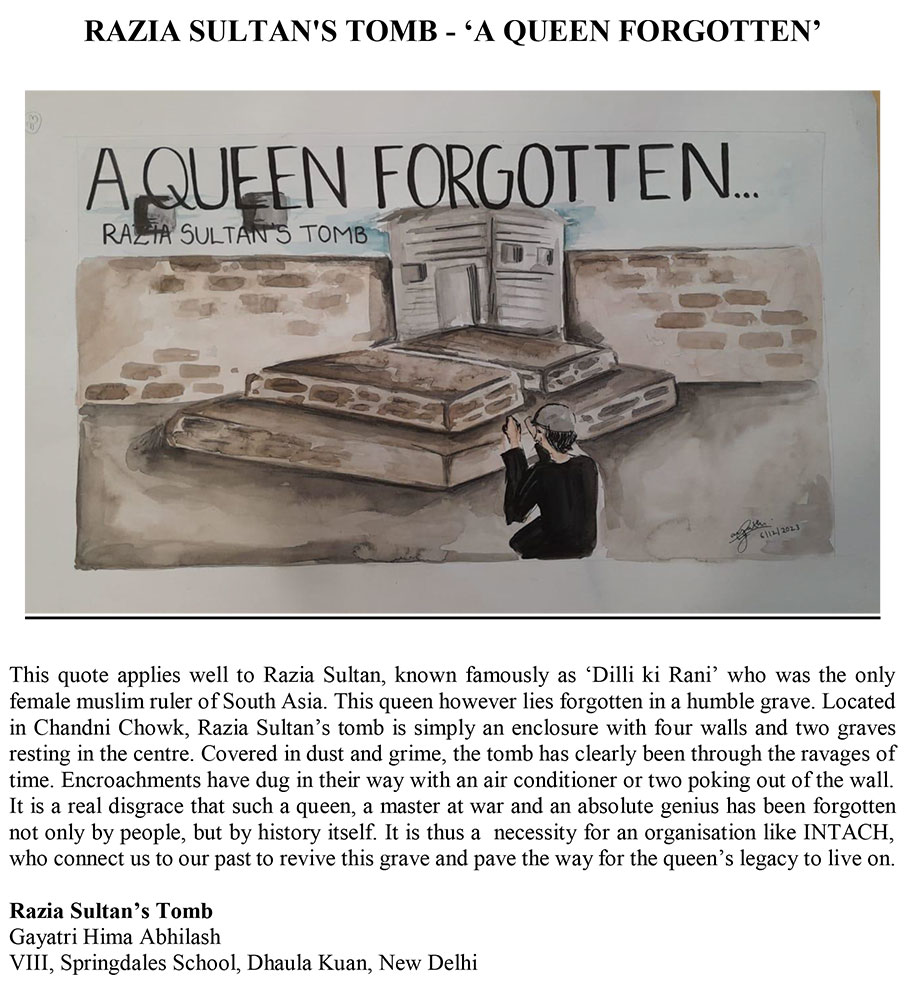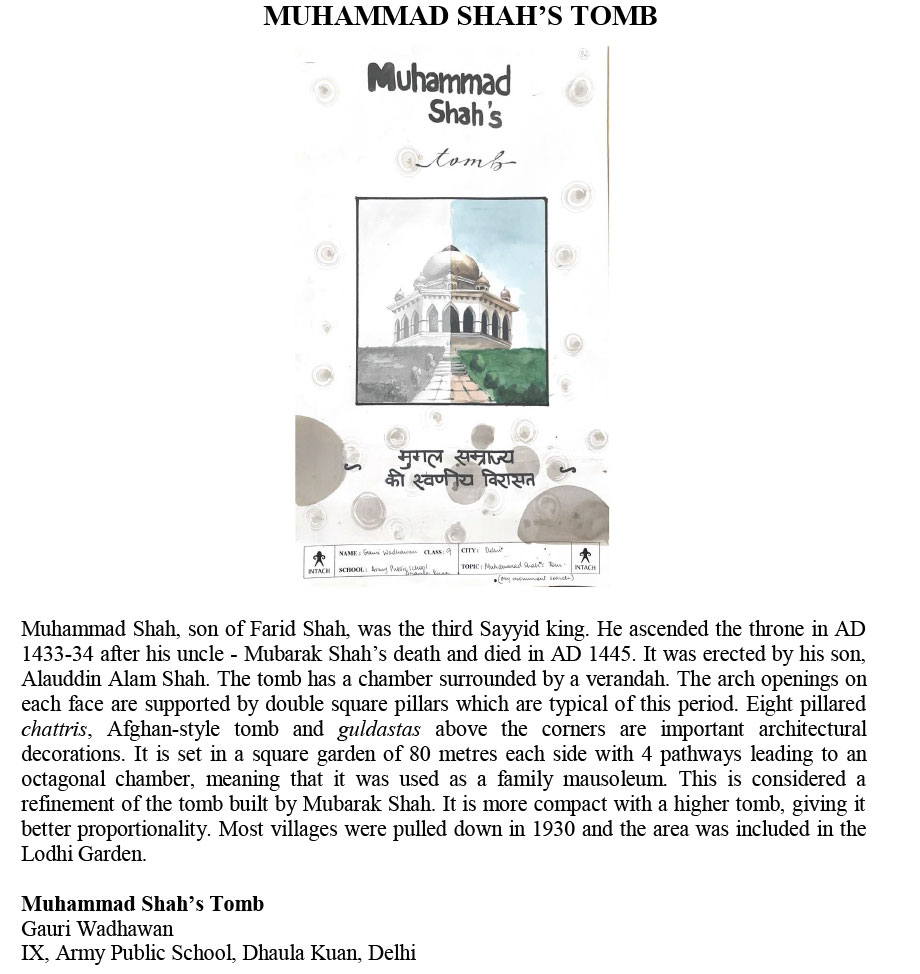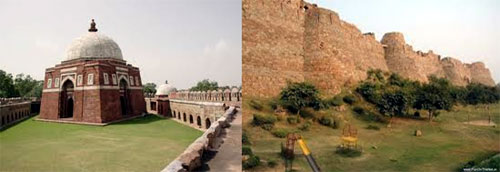
Tughlaqabad fort is a ruined fort in Delhi, built by Ghiyas-ud-din Tughlaq, the founder of Tughlaq Dynasty, od Delhi Sultanate of India in 1321, which was later abandoned in 1327. Ghazi Malik was a feudatory of the Khalji rulers of Delhi, India. He suggested the king to build a fort on a hill rock in the Southern Delhi. Later, hr drove away the Khiljis and assumed the title of Ghiyas-ud-din Tughlaq.
He immediately started the construction of his fabled city. The mausoleum of Ghiyas-ud-din Tughlaq is connected by a causeway to the Southern outpost of the fortification. The complex of Ghiyas-ud-din Tughlaq is entered by a high gateway made up of red sandstone with a flight of steps. The Board of ASI said the actual mausoleum was of a single- domed square tomb. Inside the mausoleum, there are three tombs. The central one belongs to Ghiyas-ud-din Tughlaq and other two are of his wife and his son Muhammad- bin- Tughlaq. The fort consists of massive stone fortifications that surround the irregular ground plan of the city. The citadel with a tower at its highest point is known as Bajai - Mandal. The sloping rubble- filled city wall is a typical feature of monuments of the Tughlaq Dynasty.
Tughlaqabad Fort
Mariam Fatima
VI, Delhi Public School, Mathura Road, Delhi
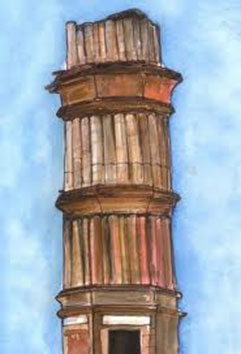
The last Minar, commonly known as the Hastal Minar, deserves more attention than it’s given. The Hastal Minar is also known as the ‘brother’ or ‘cousin’ of Qutab Minar. Hastal Minar is a tower in Red sandstone and brick in West Delhi’s Hastal Village doesn’t ring bell for many. The Minaret was build by Emperor Shah Jahan in 1650 as a Hunting Lodge. A narrow staircase leading up to the top of the minar and the tunnel connecting it to the Baradari(entertainment hall) are the highlights of this structure. One of the stories revolving around its name is that the place used to be submerged in water and elephants used to rest hare and that’s how it got its name ‘Hastal’ from Haathi(elephant) and sthal(place). Yers of neglect and anonymity have rendered the building dilapidated. The pillar is a sad story of continuing neglect and apathy. Built in red sandstone like the Qutub, the existing structure has only 3 storeys left. Decorative features of sandstone cladding the Kangura patterns are also similar to that of Qutub. It’s architecturally and historically significant should enjoy the same importance as the Qutub.
The Hastal Minar - Little Known Building
By- Abhisheka Sharma
IX, V.V.D.A.V School
Delhi
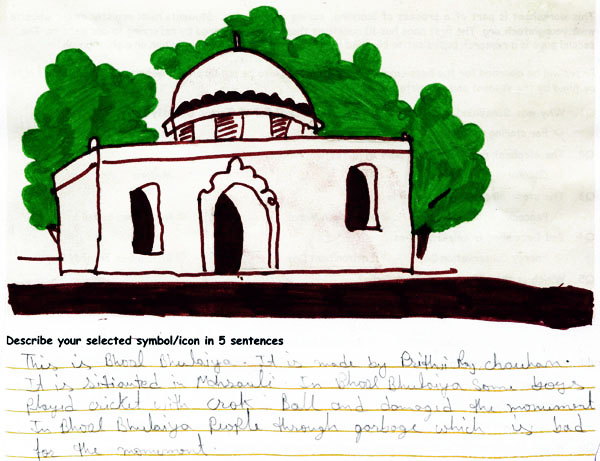
Bhool Bhulaiya
Kunal Rothi
R.P.V.V
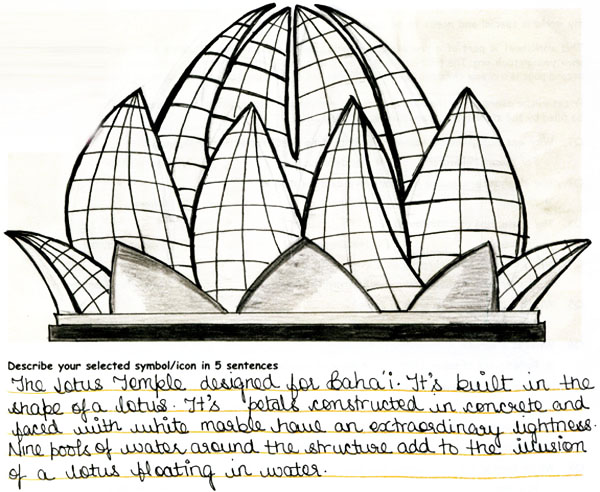
Lotus Temple
Shivangni Jain
Modern School Barakhamba
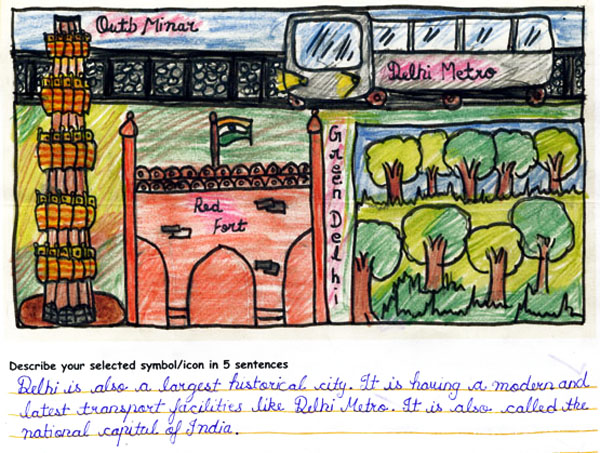
Delhi is largest green city of the world
Shriyanshi Bhargava
Green Field School
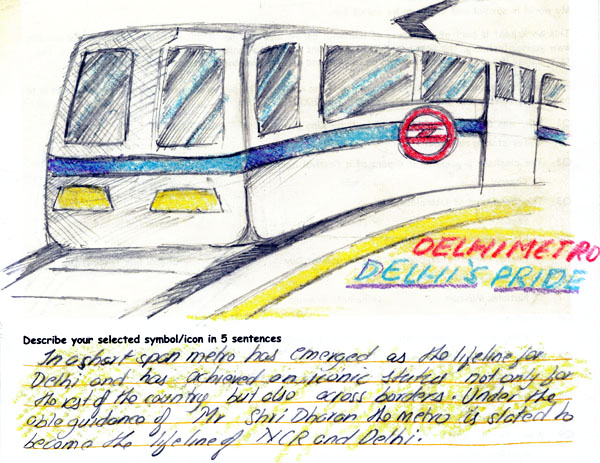
Delhi Metro
Siddhant Bajaj
Modern School, B.K
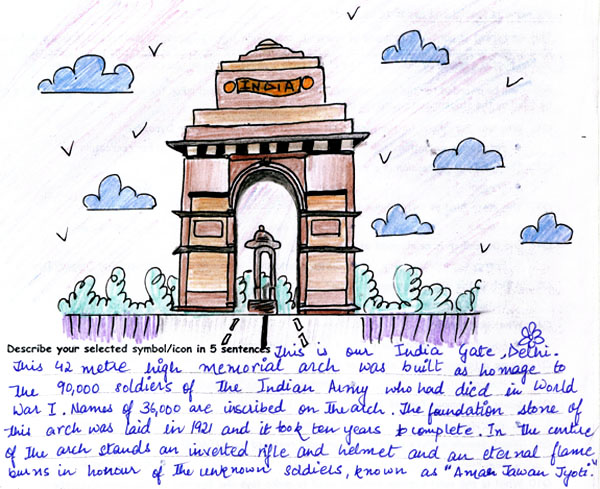
India Gate
Simra Rasheed
Modern School, B.K

Delhi Haat
Tejasi Bhatnagar
D.P.S. Mathura Road
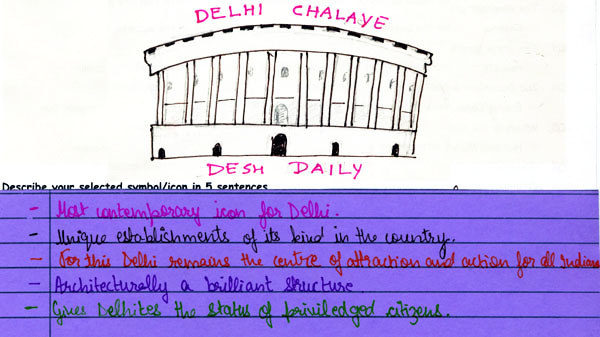
Parliament House
Tanya Sharma
D.P.S. Mathura Road
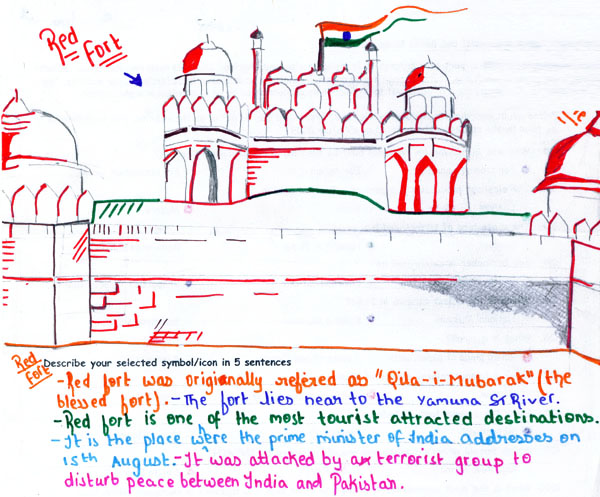
Red Fort
Raghav Bhalla
Modern School, B.K
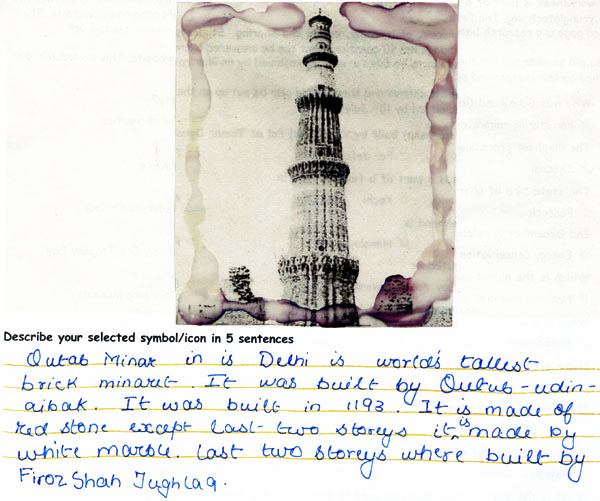
Qutab Minar
Rakshit Kalra
St. Mary's
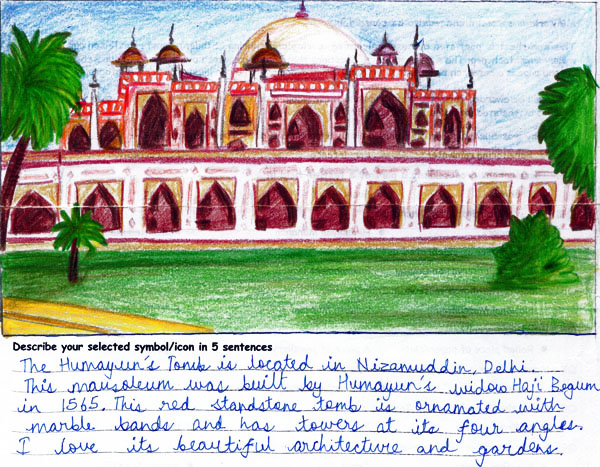
Humayun's Tomb
Areeba Ahmad
The Pinnacle School

Jantar Mantar
Jyoti Karan
St. Mary's
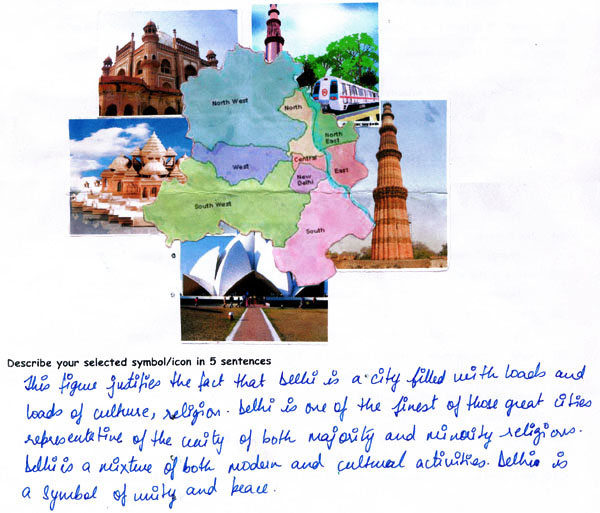
Aishwarya
D.P.S. Mathura Road

